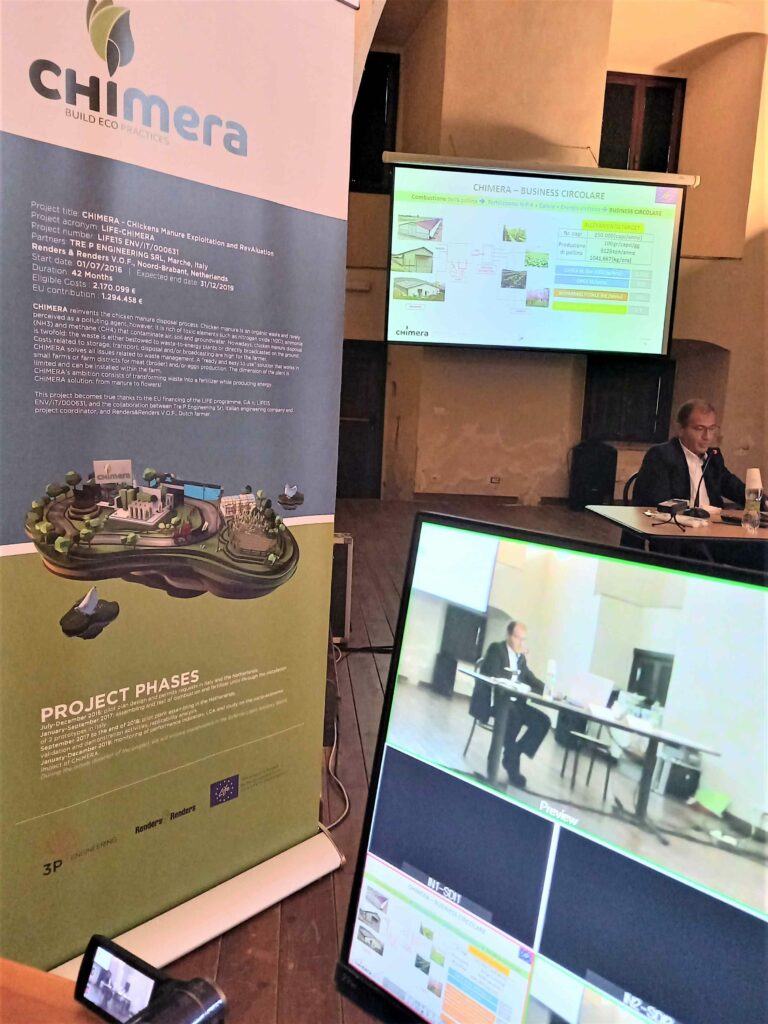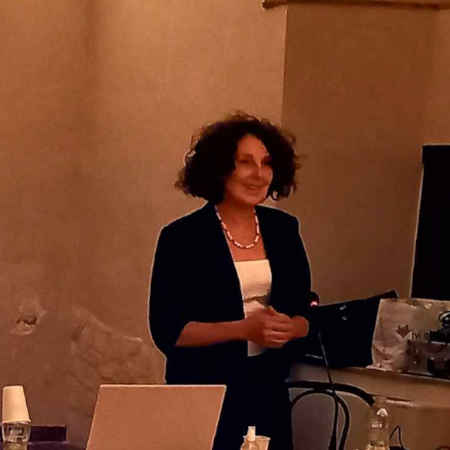

WORKSHOP
LIFE Networking Meeting

TRANSFORMING WASTE INTO RESOURCES:
VIRTUOUS CASES OF CIRCULAR ECONOMICS
Saturday, September 25th, 2021
Orsini Naro Castle in Mompeo (Rieti, Italy)



LOCATION: ORSINI NARO CASTLE, MOMPEO (Rieti, Italy)




AGENDA
LIFE CHIMERA, LIFE POREM and Soil4Life organized a conference on the circular economy on Saturday 25 September 2021, at the Orsini Naro Castle in Mompeo (Rieti, Italy) with a focus on the possibility of transforming some livestock manure from waste into resources, to identify new best eco- practices dedicated to the agricultural sector.


NETWORKING LIFE PROJECTS
The leitmotif of the various speeches of the event was the identification of strategies and projects that can represent virtuous examples, considering that the soil, a fundamental element of the environment and ecosystem, is a limited and non-renewable resource. In this context, the three projects LIFE CHIMERA, LIFE POREM and Soil4Life trace new paths for a sustainable future.



LIFE CHIMERA – CHIckens Manure Exploitation and RevAluation” Project funded by the European Union – GA n. LIFE15 ENV/IT/000631
LIFE POREM – Poultry manure based bioactivator for better soil management through bioremediation (Life 17 Env/It/333)
SOIL4LIFE – LIFE GIE/IT/000477
SPEECHES AND SPEAKERS
In addition to the detailed presentation of LIFE CHIMERA, LIFE POREM and Soil4Life, during the event moderated by Marina Penna (ENEA), some in-depth speeches have been proposed, thanks to the contributions of Prof. Antonio Boggia of the University of Perugia, of Pablo De Paola and Fabrizio Gismondi of Arpa Lazio, and Costantino Raspi, CO&SO – European Planning, with an overview of the calls in Europe to finance activities related to the soil, agriculture and the environment, with the aim of ensuring that the most innovative projects can become new business models for the market.




«In the zootechnical sector, models of sustainable management and circular economy are rapidly spreading. In particular, the management of wastewater requires technological innovation and clear and shared guidelines among the various actors involved », explained Prof. Antonio Boggia, of the University of Perugia, highlighting the difference among Linear Economy (Raw material – Production – Use – Waste), Economy of Recycling (Raw material – Production – Use – Recycling – Waste) and Circular Economy (Raw material – Production – Use – Recycling).




«The control of potentially polluting activities for environmental matrices aims to prevent pollution of the soil and groundwater and surface water due to the incorrect use of fertilizers that may contain dangerous substances beyond the legal thresholds or cause excessive loads of nutrients, among the main causes of groundwater pollution and eutrophication of lakes. The aim is to ensure that the by-products of animal husbandry and agriculture are increasingly valued and fully integrated in the perspective of the circular economy», underlined Pablo De Paola and Fabrizio Gismondi of Arpa Lazio.